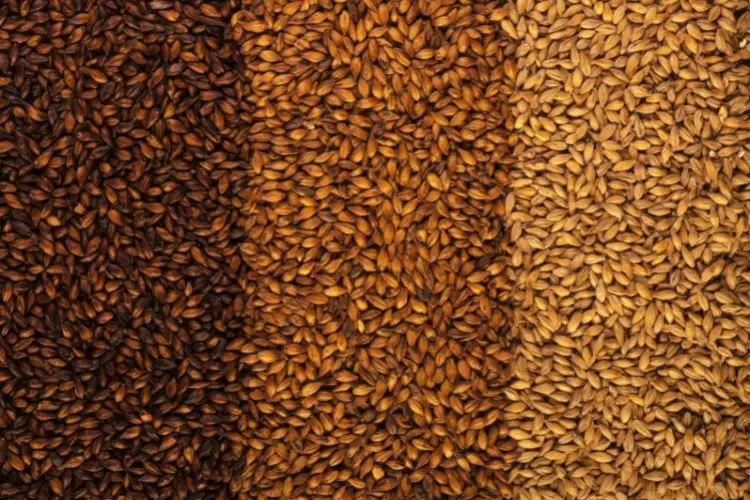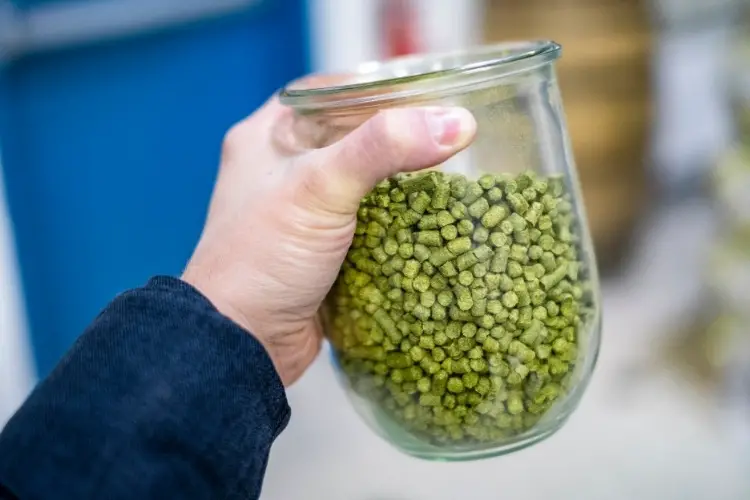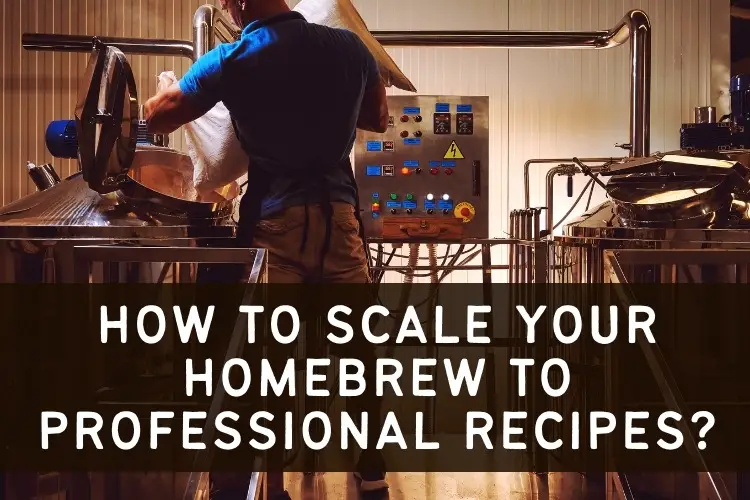Many of you have fulfilled the dream, procured financing, written a bullet-proof business plan (right?), and are in the process of building your brewery.
There are recipes waiting in the wings that have delighted friends, families, and visitors for years. This is after all why you got into it: the undying love of beer and malt craft.
Scaling a 5-gallon homebrew batch to a 500-gallon professional batch needs some ingredient adjustments. Professional recipes primarily require less specialty malts and require more precision of hop utilization.
Consistency of process is paramount. Computers make it easier. However, learning the formulas long-hand, experience, and intuition are key to scaling a recipe.
As new software shows us daily, people’s need to remember things and learn process goes out the window. When push comes to shove, apps are only as useful as the light emitted from the screen itself. A day will come when the brew needs to happen by heart. Will you be ready?
Are Homebrew Beer Recipes Scalable?
Scaling recipes is de rigueur for any brewer.
Going from 1 gallon to 5 gallons or more, ingredients are proportionally adjusted. Scaling home to professional recipes need nuanced adjustments. Flavoring malts are used in lesser amounts and hop additions require precision.
Malt Adjustments

The big difference is that mash temp must be the same every time. At home on the front/ back porch, it is often like this.
150˚, awesome, we’ll get some serious alcohol out of this one.
Two weeks later, batch two as you stockpile for an annual summer get-together.
157˚, super, man this will have some serious mouthfeel.
Two weeks later, batch three to round out the 6-case contribution to the summer bash. There will be some investors at the party.
153.5˚, Perfect! Man, we bridged the enzymes, we’ll get the perfect conversion from both ends.
The beer was good, all other processes were the same. People were pleasantly smashed, have full bellies, are coffeed up and drive safely home.
Your key guys were at the party and are IN, committed, even write you a check. You hug your partner, wow. We ‘re going to revolutionize beer in this town.
The pro reality
When brewing the flagship beer, the mash must be the same every time – full stop.
We can let the mash temp vary.
Starting and finishing gravities will be different, mouthfeel will be different, the pH of the beer could be different, and the way hop character shows itself will vary.
In today’s market, keep it tight- same strike and mash temp, every time.
Malt variety
It is normal to experiment liberally with malt at home, mixing flavors and using aggressive amounts of crystal or chocolate malt.
In pro brewing, all the flavors are accentuated to a noticeable degree.
20% crystal malt at home could be 12% at the brewery. 5 % chocolate at home may be 3.2% at the brewery.
Higher adjunct volumes can add astringency.
I know because I did it and learned it by heart and by gut.
The short version is as follows: the longer mash, sparge, and boiling time bring out the subtleties and deep character of the malt, not least the kettle browning known as the Maillard effect.
Hops Adjustments

The computers take care of all this, done. OK…Learn it by heart, write it out on paper.
One day the internet will be out, there will be a fire in the electrical panel that burns all the electronic devices in the brewery (happened at the ol’ FBBC!) but it’s brew day and the temp and boiler controls have been replaced while awaiting the new computer’s arrival.
In the old days, we got out the stone tablets and chisels and homebrewed using Patron Saint Papazian’s (Complete Joy of Homebrewing – Brewer’s bible, anyone?) home bitterness units –HBU calculation. Add up the alpha on the hops. There is a target, say 20 HBUs. The Goldings hops are 4.9% alpha, 4 ounces plus a little. Bitter, flavor, aroma, stages, just look at the recipe and figure it out, Relax, have a homebrew.
We did a lot of relaxing and drinking in those days. The beer was good.
IBUs – International Bitterness Units
Man, I know what those are, “Program you use here” tells me everything, I just key it in!
So confident, and the programs do help so much, until it’s time to hop, NOW, in 3 minutes, the internet is down, this is a new style, we haven’t weighed the hops yet!
This is the formula you use.

Learn the IBU formula, by heart, in your sleep, and write it into your notebook longhand, everytime you calculate.
An example is as follows.

The formula and more specifics are reviewed in the article, 6 Differences Between Home Brewing and Commercial Brewing.
Yeast Adjustments
The yeast you use commercially is nearly or exactly the same as at home. It originates from the same labs and yeast banks. The difference is volume and counting.
Some brewers pitch by weight, others by physical volume, and still others pitch new yeast each time.
I ran two smaller breweries, 7 bbl. and 15bbl. I pitched by volume: about 2 gallons of slurry for 7 and twice that for 15. Lucky for me, lager yeast is hard to overpitch. In the early days of FBBC, I struggled to correctly pitch ale yeast at times as most of my tanks were dish bottomed.
An airtight method is to take samples during the cool-down and count the cells using a microscope.
Overpitching – the bugbear
The key difference is, again, you must be precise to be effective and encourage the beer to act exactly the same way each time. It is exceedingly easy to overpitch ale yeast.
Fermentation takes off quickly! The sugar is consumed so fast the yeast starts cannibalizing itself leading to a stupefying number of off-flavors.
I discuss yeast at length in the article, Consequences of Overpitching and Underpitching Yeast.
Read, research, consult with a professional (KMB Consulting is here if you need), and find a precise method to get the correct cell count each time a new batch cools out of the kettle.
Water
Water is 95% of the beer, so it matters.
Many have exceptional filtered tap water. I had nice pure well water at home.
Others buy 5-gallons of spring water.
How does this translate when we need 500 gallons.
A good carbon filter is the first step.
I learned how to make one from the inimitable John Lyda of Highland Brewing Company back in the day. Saved 1000 bucks. Local brewers shared information and looked out for one another as best we could.
First ask the water company for a chemical analysis. This reveals the chemical and mineral content of the local tap water. You can use chemical additives to enhance flavor or off-set existing imbalances in the water. Asheville whatever was exceedingly soft, so it could be shaped and flavored in any way that suited any style.
Water pH in the mash is very important as it affects enzymes and may cause harsh flavors to leach from the husks. I didn’t pay as much attention to it as I should have. At home, we rarely worry about such things. In small amounts, problems stay small and can be forgiven and overlooked. At a larger scale, they are there for the world to see and taste.
Final Formulation
There are successful homebrewers that make the jump to professional brewing with great success.
My approach is to ask you to think of things in terms of scale and consistency. Neither of these things are important at home as no matter the level and investment of the Homebrewer, it is a hobby.
The moment we make beer for sale, the game changes. The stakes are sky high. The beer must be consistent and unique in today’s market. The coveted recipes from the home notebook are translatable. It is less an issue of a little more of this and a little less of that, than a matter of broadening your perspective.
Should you need advice or new perspective in your commercial brewing venture, reach out to us at ⭐ KMB Consulting. We will get you on track and help you get the rest you need.

